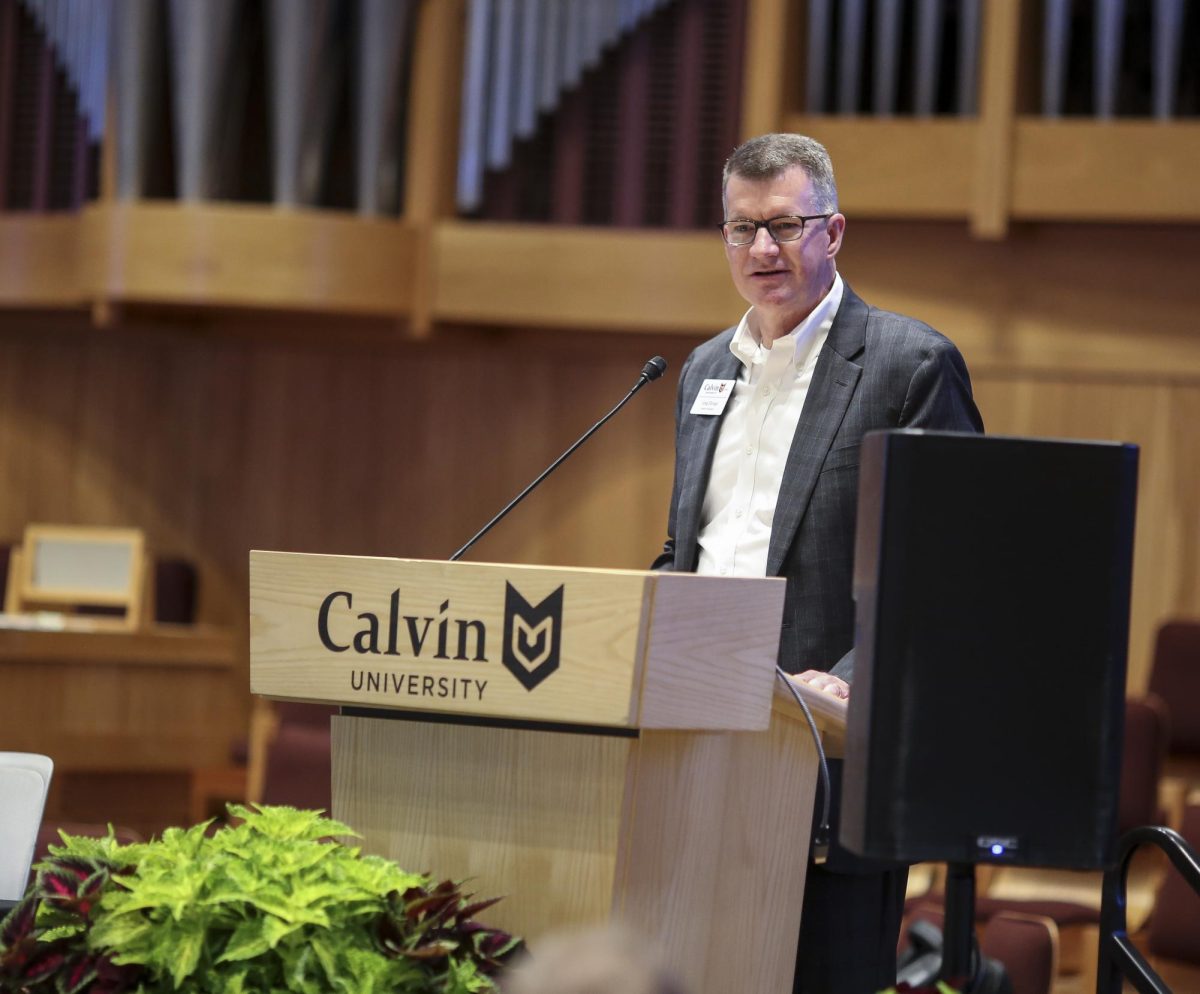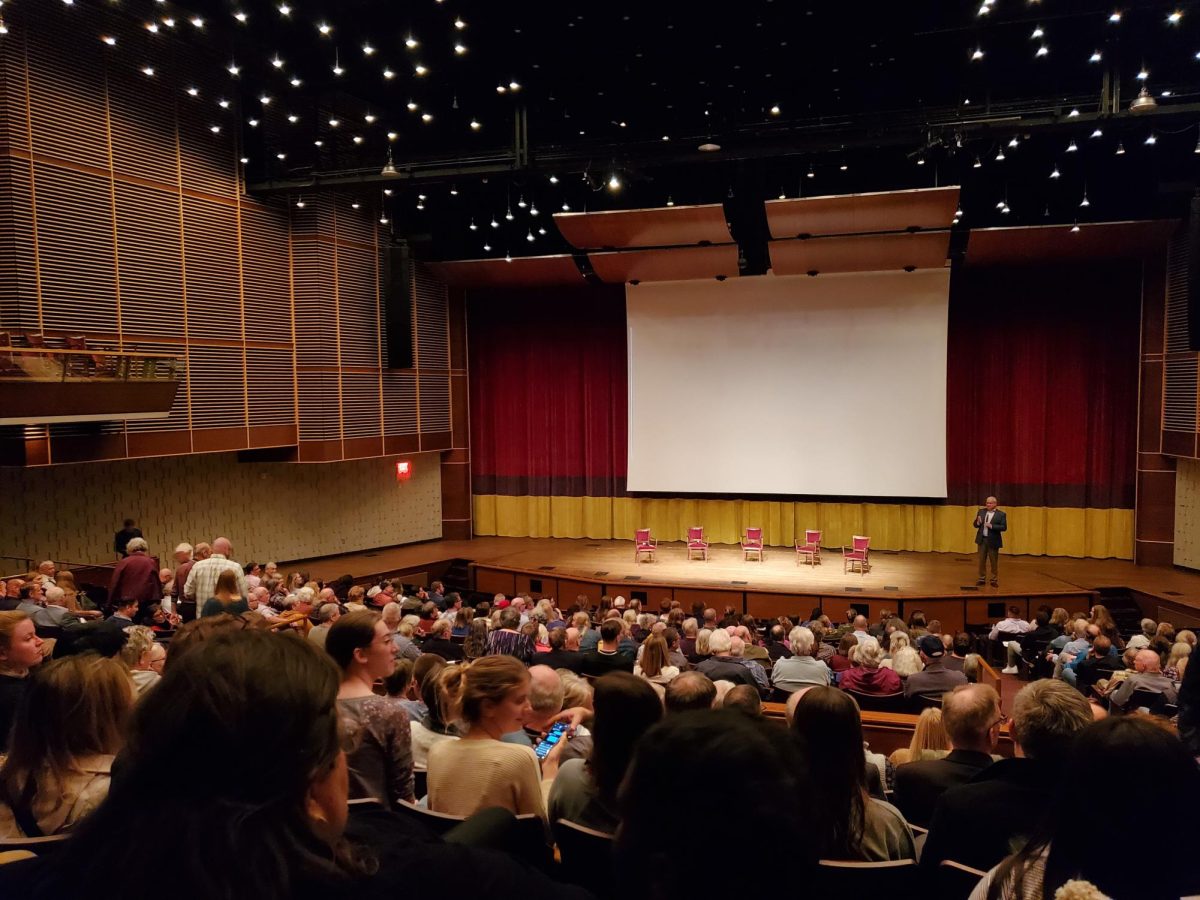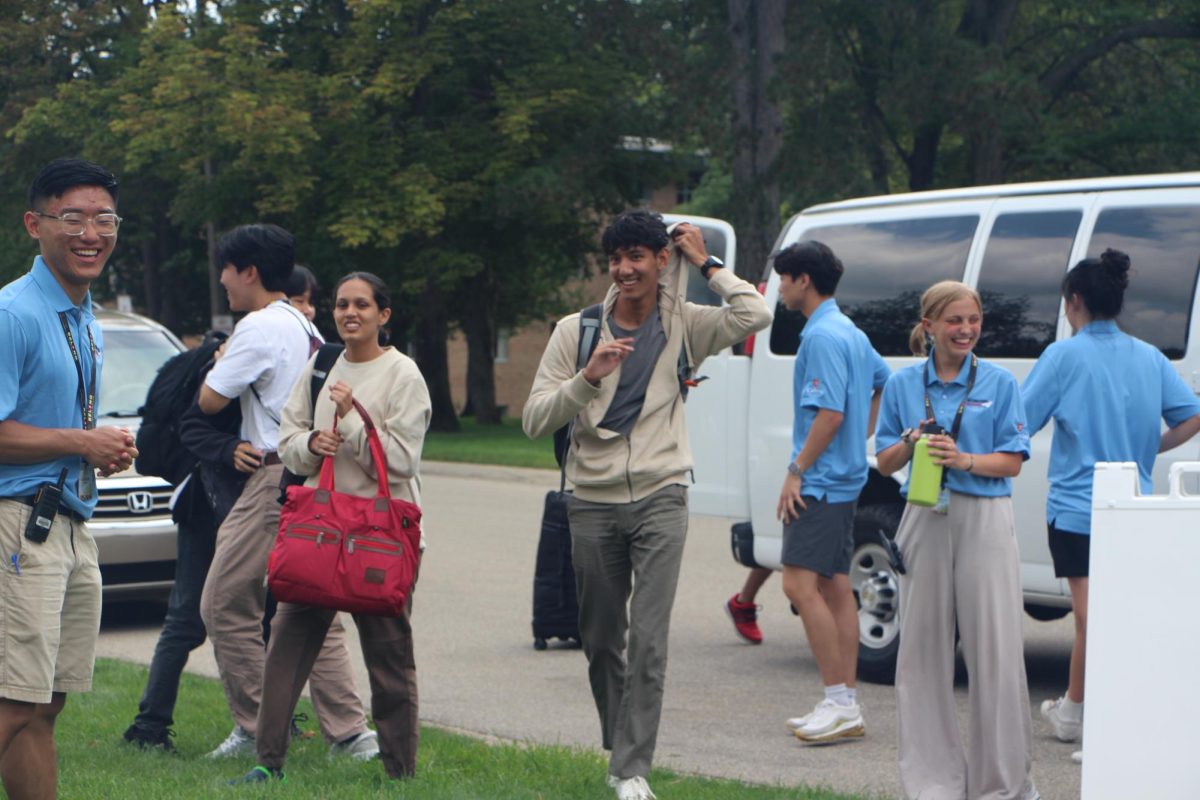If you were to ask today’s average Calvin student who Moses is, they would likely tell you about the Biblical character who parted the Red Sea and wrote the Ten Commandants. However, if you were on Calvin’s campus 60 or 70 years ago and asked a student the same question, you might receive a different answer. They might instead tell you of the golden statue that made appearances across campus for decades as students fought over it. They would be telling you about the biggest tradition to ever exist at Calvin, the tradition of the Moses statue.
The Moses Tradition
The Moses statue created an iconic tradition that captured the attention of generations of Calvin students. The premise of the tradition is relatively simple: students were constantly competing to see who could get their hands on Calvin’s three-foot-tall, gold plaster statue of Moses. It became a point of pride for students as they tried to gain possession of Moses.
“In the early days of Calvin, it was a big deal. Every school has a tradition, and Moses was the fun thing that was Calvin’s,” says Michael Van Denend, director of alumni, parent and community relations.
Moses has been affectionately known by the early student body ever since it first arrived on campus in the 1920s. The statue was frequently shown at Calvin events, running through the middle of a concert or appearing at athletic events. Students were always wondering who had Moses, when he would show up next and, most importantly, could they take him for themselves?
Former chaplain Dale Cooper recalls the passion with which students would try to get Moses: “When he’d come on campus, you’d have people flying toward that thing. He had a lively history around here.”
Moses was expected to make regular public appearances by whoever had him, and students never failed to find creative ways to show the statue. Once, in the 1950s, students disassembled a Model-T Ford truck, reassembled it inside the administration building and placed Moses in the driver’s seat. In the 70s, Moses was once lowered through the ceiling of the gym onto the court during halftime of a basketball game, causing students to flock the court to try to get him.
The Beginning of a Tradition
Moses first arrived at Calvin when the class of 1925 gifted the statue to the college as a gift. Class officers from the 1925 graduating class wanted to gift Calvin with a piece of Italian art that reflected a religious theme. They chose to purchase a copy of Michelangelo’s statue of Moses.
At this time, Calvin was located at the Franklin Street campus, and the statue was placed in the front hall of the administration building, next to the main entrance to the chapel. Since chapel was mandatory at the time, every student would pass by Moses daily.
The class of 1925 knew about the origins of the Moses statue, but the rest of the Calvin student body were left puzzled. The statue showed up in the administration building without any explanation to students, and they were surprised to suddenly be greeted by a golden statue on their way to chapel. Students were not only curious about Moses, but also amused when the statue was found wearing a hat one morning, or when a lost scarf was found wrapped around his neck another time.
Before long, the Moses statue disappeared from its usual home: it had apparently been taken hostage by a student. No one knew what had happened to Moses until he appeared at a basketball game surrounded by a group of students. Following this incident, Moses quickly became sought after by the entire student body, and a tradition was born.
A Near-Death Experience for Moses
The quest for the Moses statue could get ugly sometimes, as fights would break out between students over him. Moses was a constant problem for the faculty discipline committee, who were unsuccessful in managing the Moses issue. The committee was chaired by dean of students Dr. Hoekstra, for whom Moses was the “thorn in his flesh,” according to Van Denend.
In 1954, Hoekstra was retiring from Calvin, and he was honored at a banquet for retiring faculty. As a joke, the statue of Moses was brought out on a platter and placed directly in front of Hoekstra. Although the statue was brought out simply to joke with Hoekstra, he was furious. Hoekstra picked up a knife and beheaded the statue.
The student body was mortified that their beloved Moses had been destroyed. A few students took it upon themselves to gather the pieces of the statue and put them back together, although Moses didn’t ever look the same after this incident.
The Fierce Fight for Moses
Calvin moved to today’s location at the Knollcrest campus in 1957, and the Moses tradition followed along. While the tradition was always meant to be good-natured fun, there were some instances where Moses was the cause of conflict.
In 1968, a group of students planned to bring Moses through the Knollcrest coffee shop (where Johnny’s is today), but word got about Moses’ anticipated appearance. Once Moses was inside the coffee shop, other students blocked the all exits. Moses was stuck, and a fight broke out among students.
A Chimes editorial published in September 1968 following the Knollcrest coffee shop incident recalled, “Moses led meaningless Knollcrustaceans out of their dorms to the promised coffee shop. There they screamed and shoved to touch the source of their motivation.” The fighting became so intense that the Grand Rapids police were called to stop the fight.
Moses was the cause of another fight in 1979 when Rooks-Van Dellen included him in their celebration of Red Foley day. Red Foley was a former country music star who the Van Dellen men would pay tribute to by going to the dining hall dressed in suits with cigars in hand. They decided to bring Moses with them in 1979, but Schultze-Eldersveld learned of Van Dellen’s plan. A fight broke out in the dining hall over Moses, and Grand Rapids police were called yet again. Because of this incident, Moses was banned from campus.
Eventually Moses made his way back into life at Calvin, but the tradition was on the decline. Students no longer seemed as interested in getting Moses. “All the attempts after the 80s with Moses were half-hearted and never really stuck anymore,” says Van Denend.
The Moses Award
In the same spirit of the Moses tradition, now-retired professor Randy Bytwerk wanted to find a way to encourage creative pranking within Calvin. In 1993, he set up The Moses Award, which was Calvin’s award for practical joking. The award honored outstanding pranks performed by members of the Calvin community.
Bytwerk believes that good pranks allow the opportunity for creativity and good-natured fun to exist in an academic environment. He says, “The good pranks are an intellectual challenge, ones that are creative and interesting.”
Pranking and practical jokes have existed in various forms at Calvin, from the spoof editions of Chimes to the relocation of signs across campus. Once in the late 80s, an inflatable Godzilla toy was placed on top of the Chapel steeple. Throughout the 90s, the cheese sculpture made random appearances throughout campus, being placed on top of the Science Building and hung from the inside ceiling of the Chapel.
The Moses Award gives out an annual cash prize of $1.80 to honor noteworthy pranking, although the last time the award was given out was 2009.
Today’s Legacy
In recent years, the Moses tradition has all but died out. Moses has appeared at Chaos Day a few times, usually paraded by on top of a car. Moses was last seen on campus in 2015 — that year he joined in an Airband performance, cheered on runners at the 5K Spring Classic and stopped by the Spring Arts Festival. No one knows the current whereabouts of Moses, but it’s believed that an alumnus likely keeps Moses somewhere off campus.
Some believe the tradition hasn’t lasted because of lack of support from the administration, as Moses-related incidents could cause problems for the student life division. Bytwerk, on the other hand, believes the tradition no longer exists because people “tried to hold on for too long.”
Regardless of why Moses no longer appears on campus, the story of the Moses statue reveals an important piece of Calvin’s history. “It’s a great part of Calvin’s story,” Cooper says. “We’re richer in the present by remembering our story … Tradition is a good thing for us all.”
Today the biggest tradition that Calvin has is the Sem Pond Jump, but no tradition has quite lived up to the legacy of Moses. Norm Zylstra, who used to work in the alumni office, says, “Small traditions can be a special part if a student’s time at Calvin and make important connections between alumni … At Calvin we need to celebrate and support the few traditions we have and make an effort to bring back some of those lost traditions.”
Van Denend believes current Calvin students should “find something new to do.” Traditions like Moses are great at unifying the student body and creating something unique to Calvin.
Similarly, Cooper challenges today’s Calvin students: “Create your own traditions and make those traditions worthy of your heirs.”









